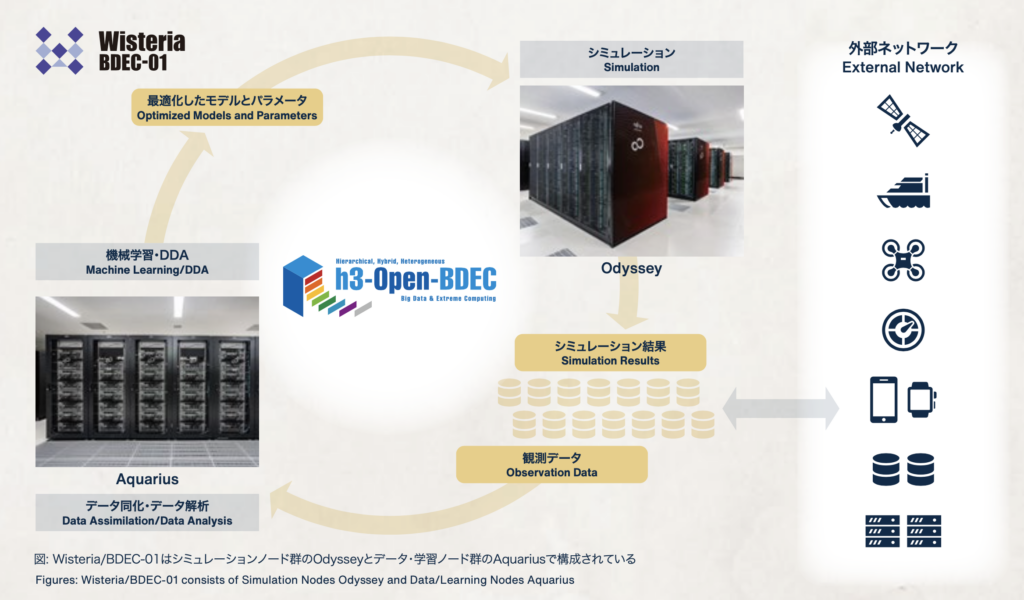Overview
The Supercomputing Research Division is conducting research on hardware, software, algorithms, and applications of next-generation supercomputers.
The division also provides supercomputing services as the core computing platform for universities and research facilities throughout Japan.
Innovative Supercomputing by Integration of
Simulation/Data/Learning (S+D+L)
Society 5.0 is a human-centered society that balances economic advancement with the resolution of social problems by means of a system that highly integrates cyberspace and physical space. It follows the hunting, agricultural, industrial, and information society*1. While supercomputers have been mainly used for simulations in computational science and engineering (CSE), the integration of CSE with the methods of data science and machine learning will enable the realization of such a new society.
We have been conducting various research and development since around 2015 to build a supercomputer system that realizes the integration of simulations in CSE, data science, and machine learning (S+D+L). The project is called Big Data & Extreme Computing (BDEC). Wisteria/BDEC-01, which began operation in May 2021, is the first BDEC system, and it consists of a node group for simulation (Odyssey) using general-purpose CPUs and a node group for data/learning (Aquarius) using GPU clusters. This is the first supercomputer system in the world to combine different architectures for simulations and data analysis/machine learning. Wisteria/BDEC-01 is equipped with a shared file system with large capacity as well as a fast file system with SSDs. In addition, a part of Aquarius can be directly connected to an external network via a high-capacity communication line, making it possible to acquire observation data in real-time from sensor networks via SINET.
h3-Open-BDEC is an innovative software platform that integrates S+D+L by minimizing computation and energy consumption and maximizing effectiveness on heterogeneous supercomputers such as Wisteria/BDEC-01. h3-Open-BDEC is a collaborative development effort between computational science, computer science, numerical algorithms, data science, and machine learning. Wisteria/BDEC-01 and h3-Open-BDEC facilitate data assimilation combining observation data analysis/utilization and simulation, and optimization of models and parameters for simulations. While nonlinear simulations for investigating real phenomena require multiple runs with different models and parameters, the number of runs can be dramatically reduced by optimizing the models and parameters through machine learning. In addition, incorporating adaptive-precision computing can reduce simulation time and energy consumption. Our goal is to promote the integration of S+D+L through h3-Open-BDEC.
*1 Society 5.0: https://www8.cao.go.jp/cstp/english/society5_0/index.html
Wisteria/BDEC-01 Configuration
| Odyssey | Aquarius | |
|---|---|---|
| Total theoretical calculating performance |
25.9 PFLOPS | 7.2 PFLOPS |
| Total number of nodes | 7680 | 45(90 CPU,360 GPU) |
| Total memory bandwidth | 8.38 PB/s | |
| Node configuration | Fujitsu A64FX x 1 | Intel Xeon Platinum 8360Y× 2 NVIDIA A100 Tensor Core GPU× 8 |
| Shared file system | 25.8 PB | |
| Fast file system with SSD’s | 1.0 PB | |


